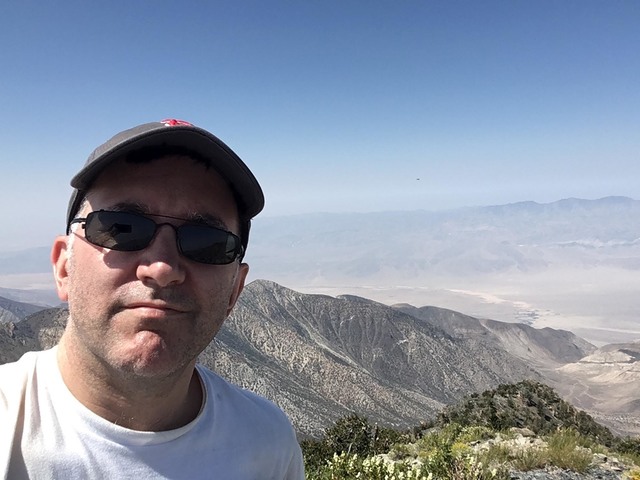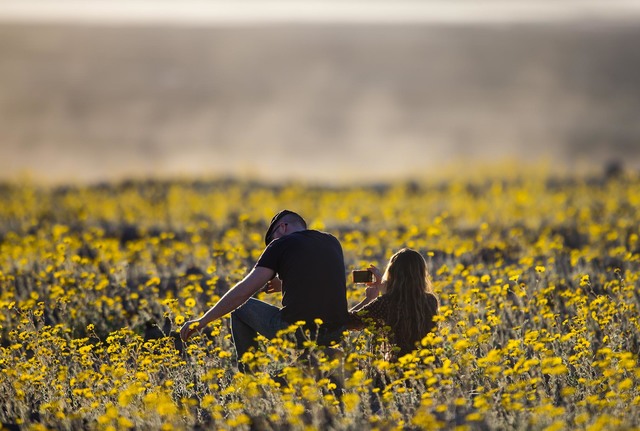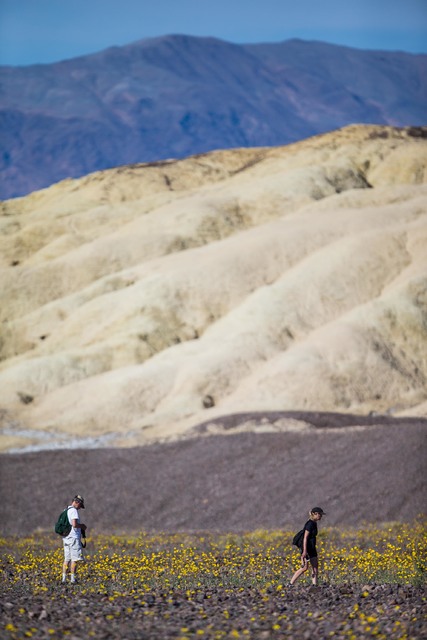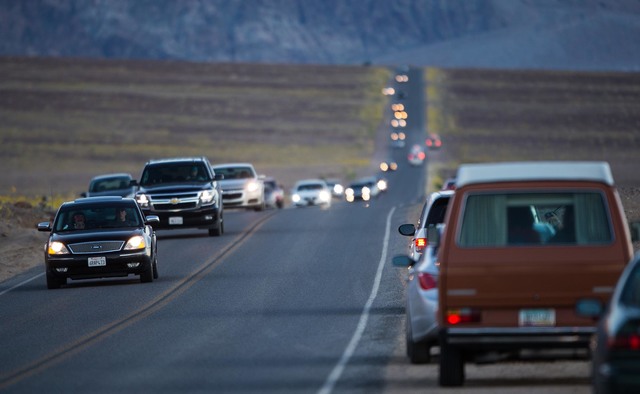The New Yorker in Death Valley
Travel writers have always loved Death Valley National Park.
A few years back, Jesse McKinley of the New York Times called it “Three Million Acres of Weird.” More recently, Christopher Reynolds of the Los Angeles Times wrote “If you know where to look and time it right, Death Valley is one giggle after another.”
But for the New Yorker magazine’s music writer Alex Ross, Death Valley was a symphony of silence and wonder just waiting to be composed. To bring it to life on the pages of that venerable publication, it would take eight years of waiting and the greatest superbloom in the park’s recorded history.
Last November, in the wake of the bitter American presidential election, the New Yorker took a detour from the political uproar to let Ross show its readers the quiet, enduring desert. The article, “Death Valley is Alive” in the Nov. 14 issue was the first time Ross had written about a place, his specialty being the art and culture of music. But “I have a peculiar and strong attraction to being in infinite space,” he said.
To someone whose ear for sound is the pivot point of his work, it might seem that the desert silence would be disconcerting but Ross says that’s part of what draws him there. “I am noise sensitive. I cherish the pervasive silence…which is another aspect of the hugeness of the desert. Habitation is so sparse that the sound is dispersed.”
The first time 48-year-old Ross saw Death Valley, he was on his way between a music festival in Los Angeles and an opera event in San Francisco with a few days to spend in between. Ross says he has always loved the outdoors, the open places. Even so, he imagined Death Valley as “a creepy, desolate environment” and found himself astounded by its beauty and variety.
There was something in the enormity of it, something meditative.
“People come with troubles and anxieties and those aren’t wiped away but put in perspective,” he said. “The first time I visited [Death Valley] I felt confused on many levels and took away something that may have helped reorient me.”
His fascination with the land itself, he says, was inherited from his geologist grandparents and parents. His grandfather, Clarence Samuel Ross, was a contemporary of Levi Noble, the USGS representative who first mapped Death Valley, and the two probably knew one another, Ross said. His mother and father were also geologists, who instilled in him a love not just of nature, but of the way the land is structured, the history recorded in the layers of the mountains.
Ross wanted to write about Death Valley after that first visit in 1999 and planted the seed with his editor at the New Yorker. They both knew that, much like the dormant seeds biding their time on the desert floor, they’d have to wait until conditions were just right to bring the story forward. The sprawling, colorful, now legendary superbloom of 2016 was a symbolically perfect fit.
The combination of well-timed, plentiful rains and temperate weather brought out a spectacular display of wildflowers that actually began with a small showing in December of 2015. Park visitors posted photos to social media, generating buzz about the bloom that spilled over into traditional media and grew into something of a frenzy, ultimately drawing more visitors than the park could handle. At the height of the bloom in March of 2016, said Death Valley National Park’s Management Assistant Abby Wines, park visitation almost doubled the norm of previous years.
“No mania in the bizarre history of Death Valley—the prospectors and swindlers of the late nineteenth century, the playboy adventurers and car racers of the Jazz Age, the psychedelic goings on in the sixties and seventies, including a residency by the Manson family—matched the Superbloom invasion,” wrote Ross in his New Yorker article.
But for him, there was more to the story than just the flowers. Alex Ross listened to Death Valley as he would a symphony and took in all the notes that harmonize to create the music of the quiet desert—the insects, the rocks, the people. He sat with Pauline Estevez, Timbisha elder, and reiterated her lifelong frustration with the whites who misnamed her homeland and called it Death Valley. He even wrote a follow-up piece for the New Yorker about the Timbisha people.
“I thought of this piece as a profile of a place,” Ross said, and approached it the same is if he were profiling a person, trying to capture all the nuances, all the moods and quirks. He visited Death Valley five times in 2016, a feat made easier by the fact that he now has a second residence in Los Angeles.
He had looked in close detail at so much of the lower elevations of the park, all the while catching sight of Telescope Peak out of the corner of his eye and he knew the story would have to end there. “I’d always look up there and wonder what it would be like,” he said, and finally made it there on his last visit to the park hoping to interview some hikers.
But as so often happens in Death Valley, when he got there he found himself alone. It was “just me trudging along this path, thinking, well this is a bust. Then I found the [visitors’] log and it was wonderful.” Ross said the log brought out a sort of confessional impulse in people, an unstinting willingness to share the truth of their experience, with “some of the deeper spiritual aspects emerging”.
He found “People who had that same kind of connection with the place that I did and I felt like I finally figured out what the piece was all about.”
Ross said he had originally wanted to include more stories of the late 19th and early 20th-century mining rushes, more biological and wildlife stories, such as the Devil’s Hole pupfish. But once he had covered the vast desert itself, there simply wasn’t room.
Will he eventually write more about Death Valley? Ross said it’s hard to know, but the experience has whetted his appetite for more nature and earth science writing.
“To go into the desert, or any wide open space,” he said, “is a very radical shift, one I’ve always savored and sought.”
Meanwhile, heavy January rains in Death Valley National Park dropped nearly a quarter of an inch of water so far on the seeds left from last year’s bloom. Conditions look good for a respectable wildflower showing this year, says Death Valley Natural History Association Director David Blacker, but it’s too little, too late for another superbloom.
Robin Flinchum is a freelance writer and editor living in Tecopa, California. Her book, “Red Light Women of Death Valley,” was published last year.
























